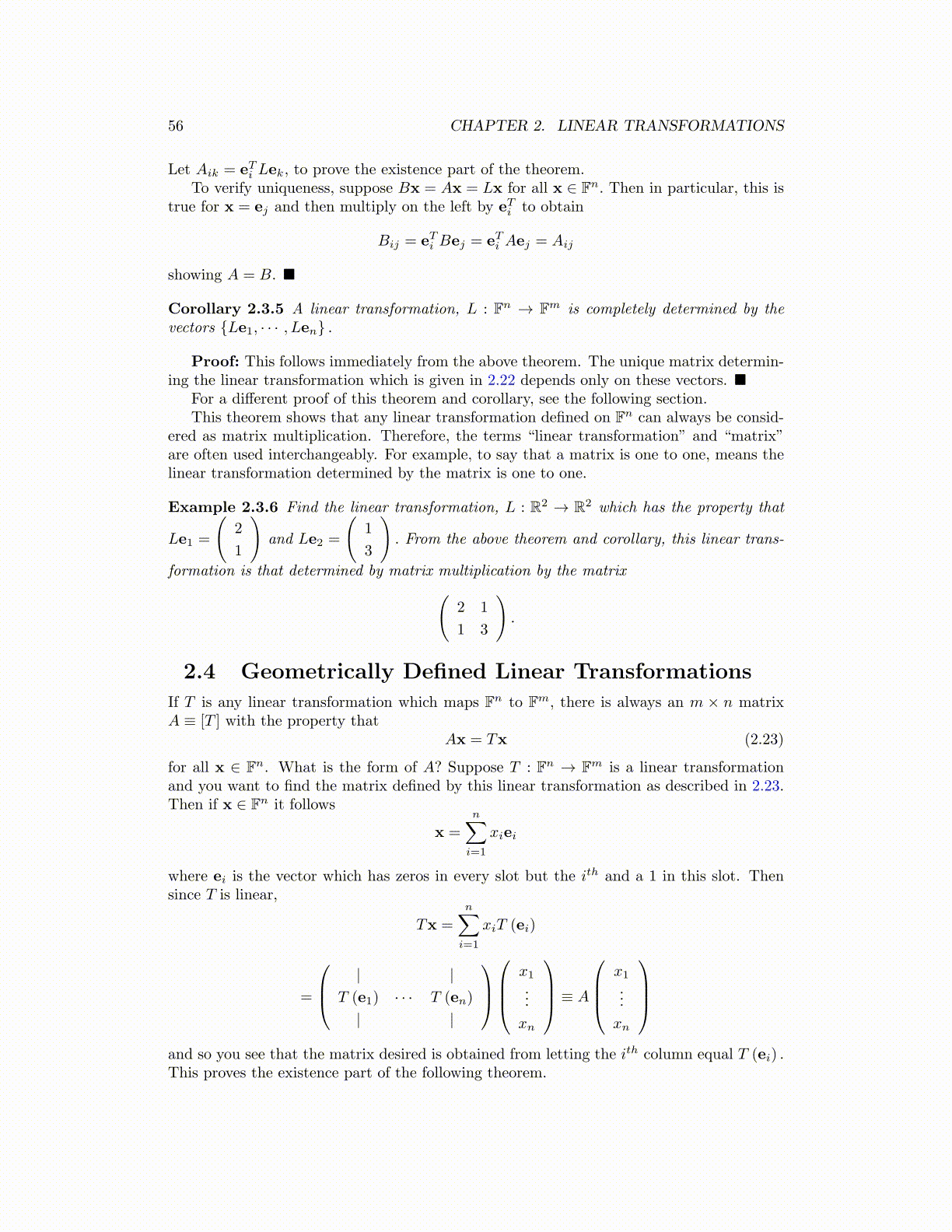
56 CHAPTER 2. LINEAR TRANSFORMATIONS
Let Aik = eTi Lek, to prove the existence part of the theorem.To verify uniqueness, suppose Bx = Ax = Lx for all x ∈ Fn. Then in particular, this is
true for x = ej and then multiply on the left by eTi to obtain
Bij = eTi Bej = eTi Aej = Aij
showing A = B. ■
Corollary 2.3.5 A linear transformation, L : Fn → Fm is completely determined by thevectors {Le1, · · · , Len} .
Proof: This follows immediately from the above theorem. The unique matrix determin-ing the linear transformation which is given in 2.22 depends only on these vectors. ■
For a different proof of this theorem and corollary, see the following section.This theorem shows that any linear transformation defined on Fn can always be consid-
ered as matrix multiplication. Therefore, the terms “linear transformation” and “matrix”are often used interchangeably. For example, to say that a matrix is one to one, means thelinear transformation determined by the matrix is one to one.
Example 2.3.6 Find the linear transformation, L : R2 → R2 which has the property that
Le1 =
(2
1
)and Le2 =
(1
3
). From the above theorem and corollary, this linear trans-
formation is that determined by matrix multiplication by the matrix(2 1
1 3
).
2.4 Geometrically Defined Linear Transformations
If T is any linear transformation which maps Fn to Fm, there is always an m × n matrixA ≡ [T ] with the property that
Ax = Tx (2.23)
for all x ∈ Fn. What is the form of A? Suppose T : Fn → Fm is a linear transformationand you want to find the matrix defined by this linear transformation as described in 2.23.Then if x ∈ Fn it follows
x =
n∑i=1
xiei
where ei is the vector which has zeros in every slot but the ith and a 1 in this slot. Thensince T is linear,
Tx =
n∑i=1
xiT (ei)
=
| |T (e1) · · · T (en)
| |
x1...
xn
≡ A
x1...
xn
and so you see that the matrix desired is obtained from letting the ith column equal T (ei) .This proves the existence part of the following theorem.